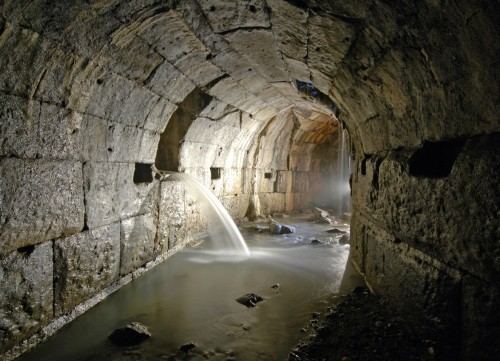 | ||
Similar Basilica Aemilia, Basilica Julia, Temple of Vesta, Forum Boarium, Curia Julia | ||
Cloaca maxima
The Cloaca Maxima (Italian: Cloaca Massima) is one of the world's earliest sewage systems. Constructed in Ancient Rome in order to drain local marshes and remove the waste of one of the world's most populous cities, it carried effluent to the River Tiber, which ran beside the city.
Contents
- Cloaca maxima
- Tecnolog a y arqueolog a cloaca maxima foro romano roma
- Construction
- Distribution system
- The Empire
- References

Tecnolog a y arqueolog a cloaca maxima foro romano roma
Construction
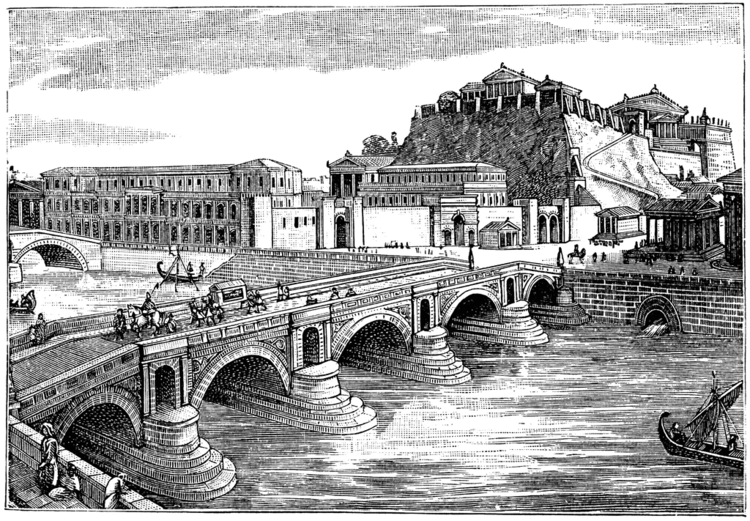
The name literally means Greatest Sewer. According to tradition it may have been initially constructed around 600 BC under the orders of the king of Rome, Tarquinius Priscus.
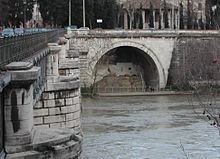
The Cloaca Maxima originally was built by the Etruscans as an open-air canal. Over time, the Romans covered over the canal and turned it into a sewer system for the city.
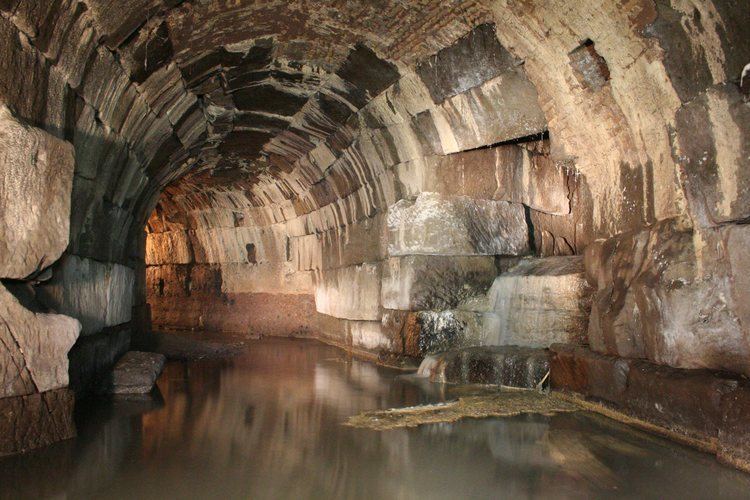
This public work was largely achieved through the use of Etruscan engineers and large amounts of semi-forced labour from the poorer classes of Roman citizens. Underground work is said to have been carried out on the sewer by Tarquinius Superbus, Rome's seventh and last king.

Although Livy describes it as being tunnelled out beneath Rome, he was writing centuries after the event. From other writings and from the path that it takes, it seems more likely that it was originally an open drain, formed from streams from three of the neighbouring hills, that were channelled through the main Forum and then on to the Tiber. This open drain would then have been gradually built over, as building space within the city became more valuable. It is possible that both theories are correct, and certainly some of the main lower parts of the system suggest that they would have been below ground level even at the time of the supposed construction.
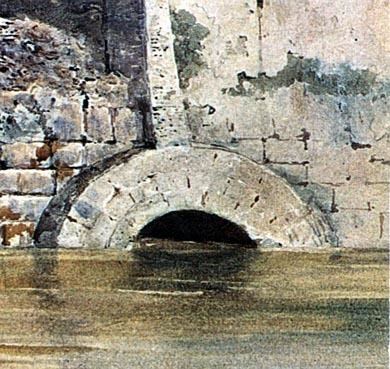
The eleven aqueducts which supplied water to Rome by the 1st century AD were finally channelled into the sewers after having supplied the many public baths such as the Baths of Diocletian and the Baths of Trajan, the public fountains, imperial palaces and private houses. The continuous supply of running water helped to remove wastes and keep the sewers clear of obstructions. The best waters were reserved for potable drinking supplies, and the second quality waters would be used by the baths, the outfalls of which connected to the sewer network under the streets of the city. The aqueduct system was investigated by the general Frontinus at the end of the 1st century AD, who published his report on its state directly to the emperor Nerva.
Distribution system
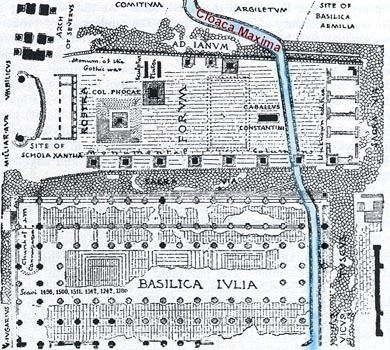
There were many branches off of the main sewer, but all seem to be 'official' drains that would have served public toilets, bath-houses and other public buildings. Private residences in Rome, even of the rich, would have relied on some sort of cess-pit arrangement for sewage.
The Cloaca Maxima was well maintained throughout the life of the Roman Empire and even today drains rainwater and debris from the center of town, below the ancient Forum, Velabro and Foro Boario. In 33 BC it is known to have received an inspection and overhaul from Agrippa, and archaeology reveals several building styles and material from various ages, suggesting that the systems received regular attention. In more recent times, the remaining passages have been connected to the modern-day sewage system, mainly to cope with problems of backwash from the river.
The Cloaca Maxima was thought to be presided over by the goddess Cloacina.
The Romans are recorded – the veracity of the accounts depending on the case – to have dragged the bodies of a number of people to the sewers rather than give them proper burial, among them the emperor Elagabalus and Saint Sebastian: the latter scene is the subject of a well-known artwork by Lodovico Carracci.
The outfall of the Cloaca Maxima into the River Tiber is still visible today near the bridge Ponte Rotto, and near Ponte Palatino. There is a stairway going down to it visible next to the Basilica Julia at the Forum. Some of it is also visible from the surface opposite the church of San Giorgio al Velabro.
The Empire
The system of Roman sewers was much imitated throughout the Roman Empire, especially when combined with copious supplies of water from Roman aqueducts. The sewer system in Eboracum—the modern-day English city of York—was especially impressive and part of it still survives.
